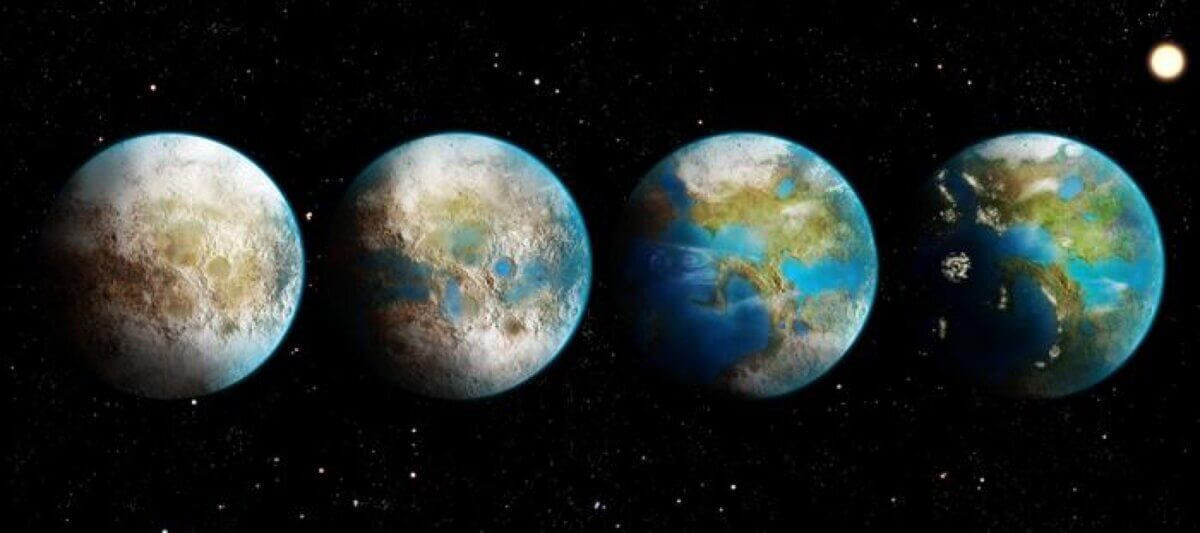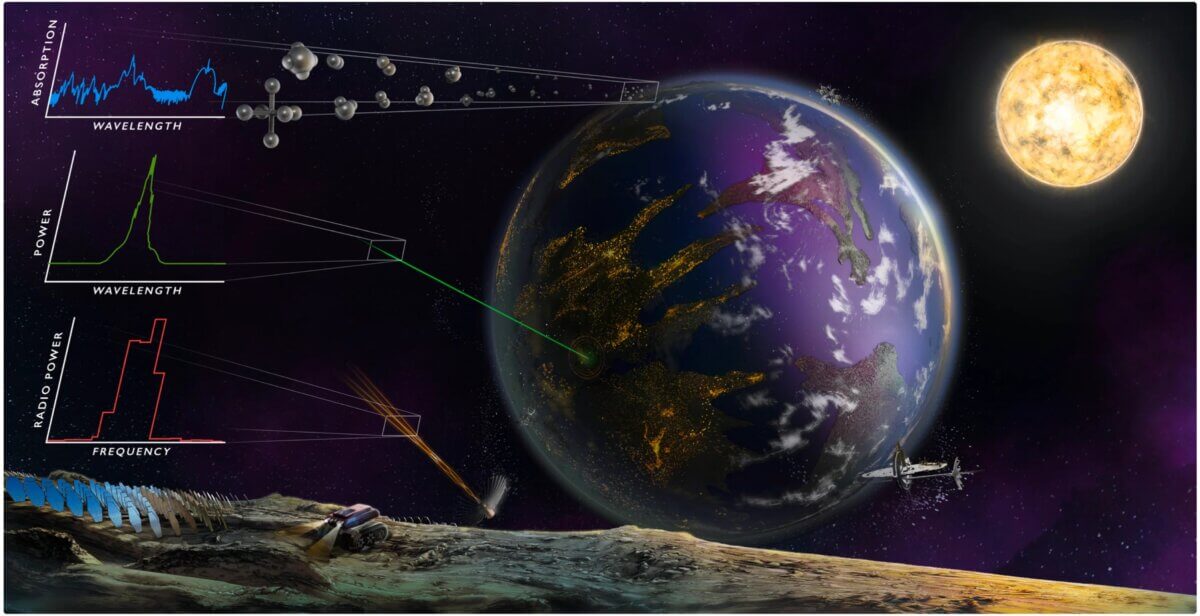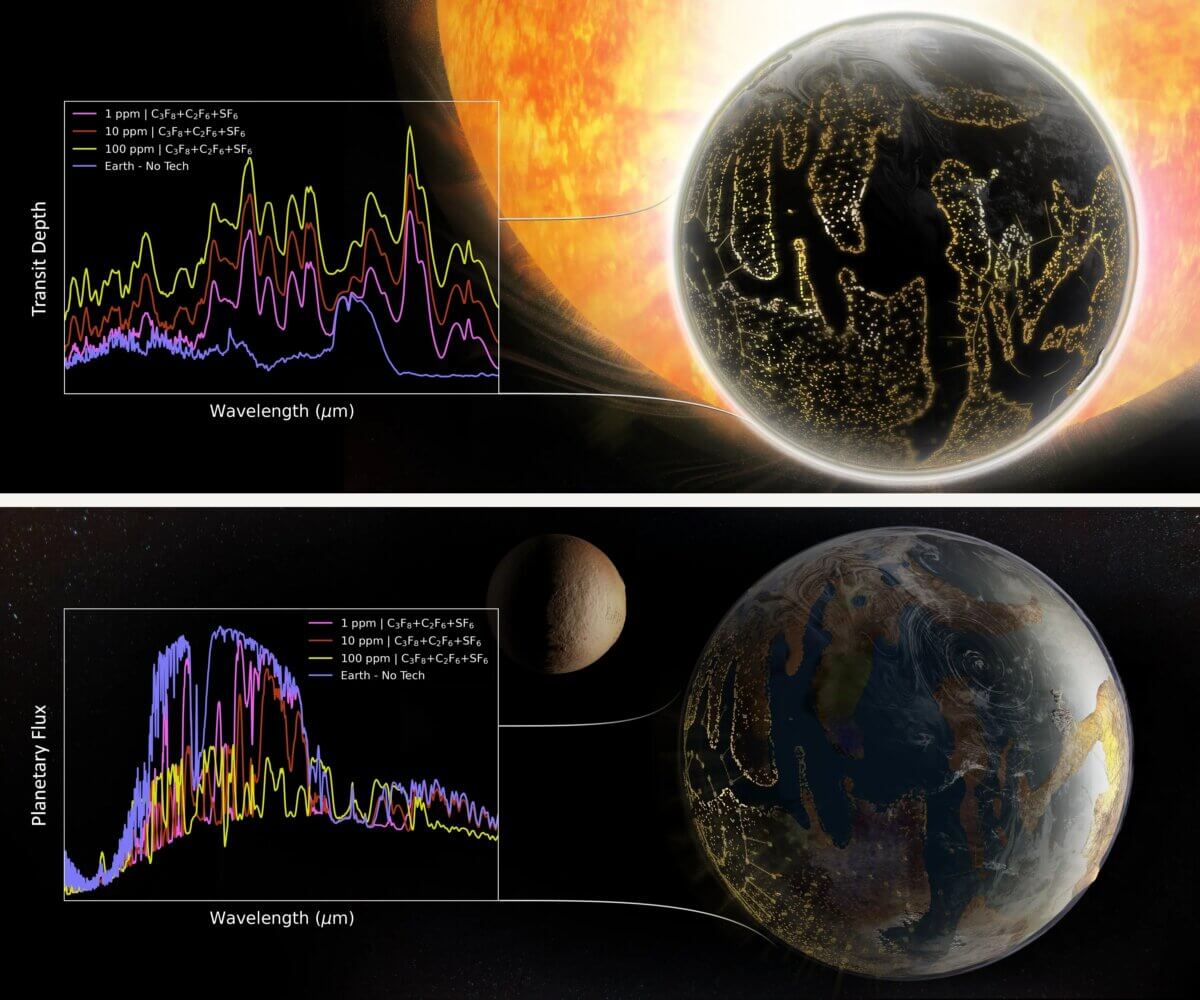
Artist's concept of an exoplanet in the process of being terraformed. (CREDIT: Thibaut Roger/University of Bern)
RIVERSIDE, Calif. — Could aliens be changing their planet's climate in the same way we are? If so, scientists believe it could make finding intelligent life much easier than we thought. A groundbreaking new study suggests that greenhouse gases could be a telltale sign that aliens are hard at work changing their world's climate — for better or worse.
Unlike climate change here on Earth, researchers from the University of California-Riverside say the presence of certain gases could signal that aliens are engaging in a process known as “terraforming.” This process modifies a planet to make it more habitable for life.
While we've only dreamed about doing this to Mars, what if an advanced alien civilization was already tweaking the climate of a world in their home star system? How would we know? The findings in The Astrophysical Journal zero in on artificial greenhouse gases that are making those exoplanets warmer.
According to UC Riverside astrobiologist Edward Schwieterman and his team, these gases would be a dead giveaway of planetary engineering. These aren't your run-of-the-mill greenhouse gases like carbon dioxide. We're talking about super-powered, lab-created chemicals that could rapidly warm up a freezing world. Think of it as a giant global warming bomb that turns cold, uninhabitable planets like Mars into a warm, livable world like Earth within years instead of centuries.
“For us, these gases are bad because we don’t want to increase warming. But they’d be good for a civilization that perhaps wanted to forestall an impending ice age or terraform an otherwise-uninhabitable planet in their system, as humans have proposed for Mars,” says Schwieterman in a university release.
5 Gases Astronomers Are Looking For
The researchers identified five specific gases that could serve as smoking guns for alien terraforming:
- Fluorinated versions of methane
- Fluorinated versions of ethane
- Fluorinated versions of propane
- Gases made of nitrogen and fluorine
- Gases made of sulfur and fluorine
If you're thinking these sound like something cooked up in a chemistry lab, you're not wrong. Here on Earth, these gases play a role in the production of computer chips. These gases don't occur naturally in significant amounts, which is precisely why finding them on another world would be so exciting. Scientists call potential signs of alien technology “technosignatures,” and these gases would fit the bill perfectly.

What Makes These Gases So Special For Terraforming?
For starters, they're incredibly potent greenhouse gases. Take sulfur hexafluoride, for example. This powerhouse chemical has 23,500 times the warming effect of carbon dioxide. That means a little goes a long way when you're trying to heat up a planet.
Another huge advantage is their longevity. These gases can stick around in an Earth-like atmosphere for up to 50,000 years without breaking down.
“They wouldn’t need to be replenished too often for a hospitable climate to be maintained,” Schwieterman explains.
Now, you might be wondering – haven't we heard about other artificial gases, like chlorofluorocarbons (CFCs), being potential alien technosignatures? While that's true, the gases in this new study have some distinct advantages. CFCs are known to destroy the ozone layer, which could be a problem for aliens just as it is for us.
“If another civilization had an oxygen-rich atmosphere, they’d also have an ozone layer they’d want to protect,” Schwieterman notes. “CFCs would be broken apart in the ozone layer even as they catalyzed its destruction.”
The fluorinated gases proposed in this study, on the other hand, are chemically inert. Scientists don't believe they would react with or damage an ozone layer, making them a much safer choice for would-be planet engineers.
Here's where things get really exciting: we may also be able to detect these gases with current and upcoming technology. The James Webb Space Telescope, which launched in 2021, or the proposed European LIFE mission could potentially spot these chemical signatures on nearby exoplanets.

Methodology and Results
To test this idea, the research team ran simulations on a hypothetical planet in the TRAPPIST-1 system, located about 40 light-years from Earth. This star system, home to seven known rocky planets, is a prime target for exoplanet studies.
“With an atmosphere like Earth’s, only one out of every million molecules could be one of these gases, and it would be potentially detectable,” Schwieterman reports. “That gas concentration would also be sufficient to modify the climate.”
In other words, even if these terraforming gases made up just a tiny fraction of a planet's atmosphere, we might be able to spot them – and that amount would be enough to significantly warm an alien planet.
While the researchers can't predict how likely we are to find these gases in the near future, they're optimistic about our chances of detecting them if they're out there. The best part? We won't need to design special missions to look for these technosignatures.
“You wouldn’t need extra effort to look for these technosignatures, if your telescope is already characterizing the planet for other reasons,” Schwieterman concludes. “And it would be jaw-droppingly amazing to find them.”










